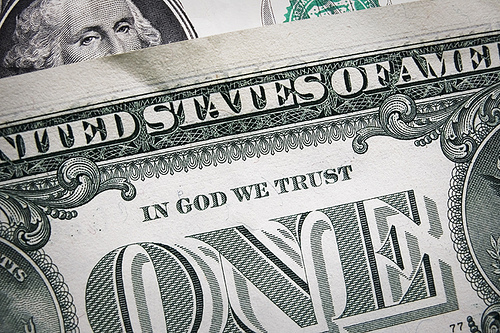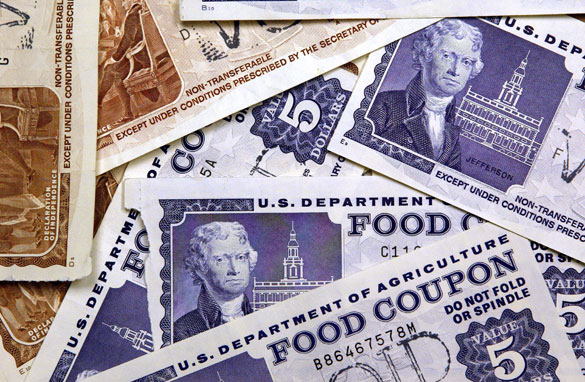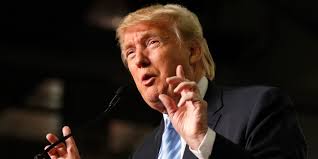With the election excitement over and our country hurtling towards a fiscal cliff, it doesn’t seem like there is much to give thanks for in the current U.S. economy. Hurricane Sandy devastated areas of the East Coast, forcing people out of their homes and jobs. The unemployment report for October wasn’t bad, but it wasn’t anything to cheer about [1]. Internationally, the Middle East is boiling over with violence and Greece can’t solve its economic problems [2].
Despite these issues, at least there is one thing we can give thanks for. Even in the midst of world turmoil, we’ll always have the American dollar. Personally, I’m grateful for a dollar that isn’t fixed to a gold standard, a floating exchange rate, and the ability for our country to control its fiscal and monetary policy.
Fiat Currency
The American dollar is an example of a fiat currency, or a currency that isn’t valued in relation to a commodity (generally, gold or silver). The value of a fiat currency is “imaginary:” it can’t be traded in for gold.
In spite of the recent controversy over the looming end of fiat currencies [3], fiat currencies have many advantages. Our economy does not depend on the supply of gold, and does not plunge into contraction when the gold supply shrinks. Often, the supply of gold does not keep pace with economic growth, and has a deflationary bias. To put this into perspective, in 2008 the total value of gold in all central bank reserves was about $1,300 billion while global bank deposits were valued at $61,000 billion. Of course, the price of gold fluctuates. The variation in the price of gold and the price of any other good would account for periods of inflation or deflation depending on the fluctuation. While currency should have some type of anchor, the gold standard is not an ideal solution [4]. Thus, I’m grateful for a dollar that is no longer fixed to a metallic standard.
A Floating Exchange Rate
After the fall of most metallic standards, a system of fixed exchange rates took over. Thankfully, this too has passed.
As Edward Lotterman points out, fixing an exchange rate can provide stability to importers and exporters, and is beneficial to tiny countries where there is a relatively high rate of importing and exporting. However, picking the currency to fix upon is difficult. There are several questions to be answered. Where do most of the imports come from, and where do the exports go? Is tourism important, and where do the tourists come from?
Then, once the currency is fixed, the country loses complete control of its monetary policy. If the currency they are fixed to has a period of inflation, they have to import the inflation or change the value of the currency exchange. Barbados (which is fixed to the U.S. dollar) faces these problems, and it can be a costly policy to maintain [5]. Fortunately, we don’t have to worry about these issues on a daily basis.
Fiscal and Monetary Policy
Finally, give thanks that the U.S. controls their fiscal and monetary policy. American politicians decide how to spend and tax, and the Federal Reserve controls the money supply. Although there are pros and cons to both of these, the overall advantages generally outweigh the costs.
The counter example that proves the rule is the European Union. In the years following the 2009 Greek sovereign debt crisis, it became clear that coordinating monetary policy with seventeen often conflicting fiscal policies is nigh impossible [6]. Maintaining control of our fiscal and monetary policy has saved the United States from some of these problems, and is something to be appreciative of in otherwise unsettling times.
All things considered, this Thanksgiving I’ll be giving thanks for the U.S. dollar. It has seen us through hard times before, and it will likely get us through hard times now.
[1] http://money.cnn.com/2012/11/02/news/economy/october-jobs-report/index.html
[3] http://www.cnbc.com/id/48349503/Are_Fiat_Currencies_Headed_for_a_Collapse
[4] http://www.banque-france.fr/fileadmin/user_upload/banque_de_france/publications/gold-standard.pdf
[6] http://www.cfr.org/eu/european-foreign-policy-euro-crisis/p29511#p1
Image from http://www.google.com/imgres?num=10&um=1&hl=en&client=firefox-a&tbo=d&rls=org.mozilla:en-US:official&biw=1280&bih=920&tbm=isch&tbnid=PsK_GXtAoGhb8M:&imgrefurl=http://www.opensecrets.org/news/reports/citizens_united.php&docid=bxz0Lsf3te_oKM&imgurl=http://www.opensecrets.org/news/moneymoney.jpg&w=500&h=375&ei=Qt6sUJqEGOXkyAHEl4AI&zoom=1&iact=rc&dur=1&sig=104843821131843178477&sqi=2&page=1&tbnh=151&tbnw=186&start=0&ndsp=15&ved=1t:429,r:5,s:0,i:165&tx=857&ty=282











